Smartphones Overheating
- Susie S

- Jul 23, 2025
- 6 min read
Updated: Aug 11, 2025
5G Smartphones and the Heat Challenge — 2025 Update

A few years ago, we investigated what was an early trend of devices overheating when using 5G and wrote a report about this trend. Smartviser’s original 2022 study demonstrated that first‑generation 5G smartphones could exceed critical thermal thresholds in fewer than twenty minutes of continuous high‑throughput operation, even within a climate‑controlled environment. Since that initial investigation, both cellular networks and handset platforms have evolved substantially.
In response to these developments, the Smartviser team undertook an expanded assessment campaign in 2025, employing the enhanced viSer Neo automation and Studio Analytics suite to conduct controlled tests on current flagship and mid‑tier devices. The objectives of the campaign were:
To quantify the extent to which sustained 5G utilisation continues to precipitate device overheating or performance throttling in commercially available smartphones.
To evaluate the effectiveness of the thermal‑mitigation measures now incorporated into contemporary chipsets, mechanical designs, and operating‑system frameworks.
Looking Back: What We Learnt in 2022
In our 2022 post “Smartphones – Can They Handle the Heat of 5G?” we explored the first wave of 5G‑induced thermal issues. Overheating isn’t new, but 5G accelerates it. Even in an air‑conditioned 16 °C lab with excellent 5G coverage, several handsets overheated within 20 minutes of continuous 5G data transfer.
Key Findings: Three smartphone Overheating Groups Identified
Group 1: Remained stable
No overheating occurred.
Devices maintained data transfer with no performance degradation.
Group 2: Triggered overheating warnings
Reached 48°C in 20 minutes.
Devices displayed overheating warnings and showed visible performance drops.
viSer Studio Analytics provided visual KPI insights showing temperature spikes in parallel with data throughput.
Group 3: Throttled performance or downgraded from 5G to 4G to manage temperature
Overheated after ~20 minutes.
Devices automatically:
Closed background apps.
Switched from 5G to 4G to cool down.
With rapid advances in both 5G infrastructure and device technology, we decided it was time to revisit the topic.
5G in 2025: A Maturity Story

Across the globe, 5G networks have entered a mature phase. Consistent mid-band spectrum deployment, improvements in backhaul, and smarter network management have led to significantly faster and more stable connections—especially in cities and major transport corridors.
🌍 Average 5G Download Speeds (2025)
Region | Country | Average 5G Download Speed |
Europe | France | 270 Mbps |
Germany | 310 Mbps | |
UK | 320 Mbps | |
Spain | 290 Mbps | |
Italy | 250 Mbps | |
Sweden | 380 Mbps | |
North America | USA | 410 Mbps (urban areas) |
Canada | 360 Mbps | |
Asia-Pacific | South Korea | 520 Mbps (nationwide) |
Japan | 450 Mbps | |
China | 460 Mbps (Tier 1 cities) | |
India | 310 Mbps (major metros) |
These speeds are not only faster but more consistent, thanks to widespread mid-band deployments and mmWave trials in dense urban zones.
But higher throughput can still mean higher thermal pressure—so how are modern smartphones coping?
SmartViser Testing: 2025 Results
In our latest 2025 study, we observed a notable shift in device behavior compared to our 2022 findings. While extreme overheating leading to shutdowns or fallback to 4G was common three years ago, that is no longer the norm.
Most smartphones we tested this year demonstrated smarter, more nuanced heat mitigation techniques—likely the result of tighter integration between chipset, OS, and thermal management algorithms.
That said, a few devices still triggered high-temperature warnings, effectively limiting user interaction until the temperature dropped. These were generally budget or mid-tier models lacking advanced cooling or thermal governance.
However, the standout trend in our 2025 results was the implementation of intelligent frequency throttling. Here’s an example from our testing:
A 5G smartphone was part of a drive test, performing continuous web browsing over a 1-hour session.
📱Observations from drive test with web browsing:
Network status: The device remained on 5G for 98% of the test and only briefly fell back to LTE (2%).
Performance: Web loading times were stable throughout the test.
Thermal response: As device temperature rose, it began throttling certain frequency bands—specifically in the uplink and mid-band spectrum—reducing RF power load.
Outcome: This successfully prevented further temperature increases without impacting the user experience.
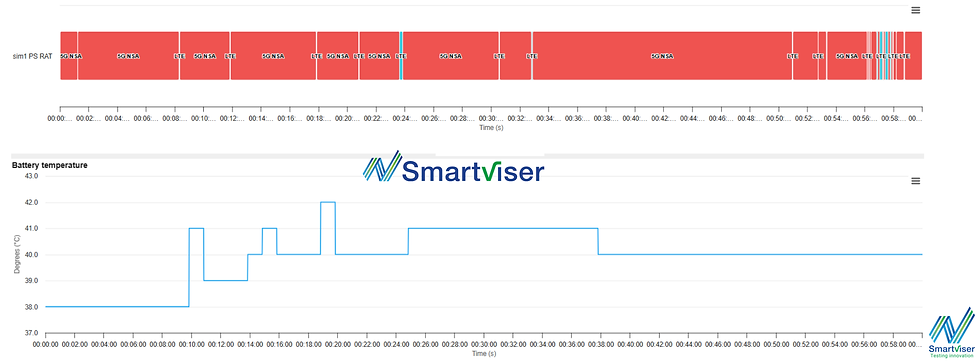
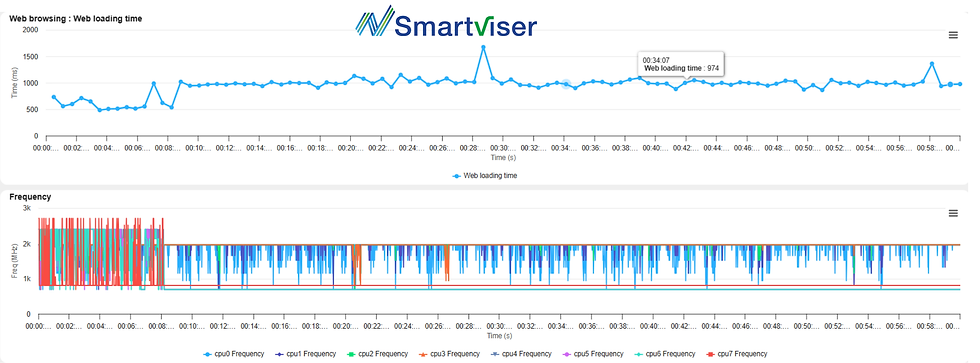
This kind of adaptive thermal response demonstrates the growing sophistication in smartphone design, where thermal limits are respected without compromising performance.
We see this as a major step forward, and an indication that 5G smartphones in 2025 are no longer limited by the heat risks that once threatened the user experience.
Intensive Testing: Gaming Under Pressure
Over the course of this year’s study, we conducted over 250 hours of testing using a wide range of smartphones and test scenarios—progressively increasing in complexity to explore the limits of thermal endurance and system stability.
One of the most demanding scenarios was intensive online gaming over a 5G network, with each session lasting up to 3 hours.
🎮 Gaming Test Key Findings:
All devices eventually switched from 5G to 4G at some point during the session.
Temperatures ranged from 40°C to 48°C, depending on the device, chipset, and cooling system.
We observed a range of thermal mitigation strategies:
Multi-step throttling: Some smartphones gradually reduced CPU/GPU load across several stages as temperature rose.
Network fallback: Rather than allowing the device to overheat, all models opted to switch to 4G at higher thermal thresholds.
Background process management: Several devices aggressively limited non-essential background apps or services to preserve stability.
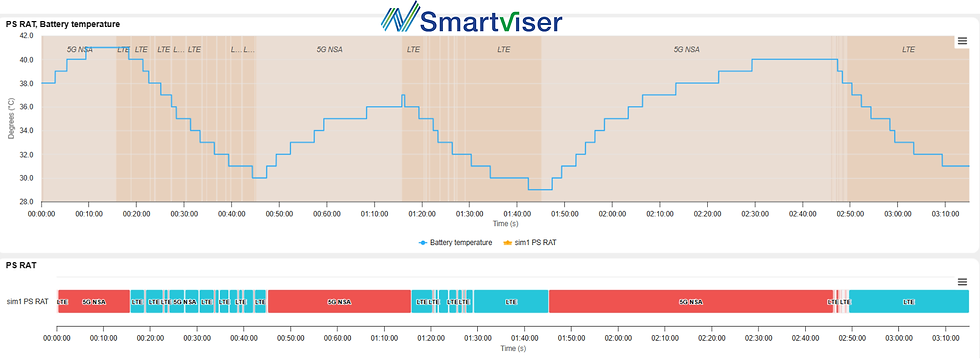
These results confirm that while heat remains a factor under prolonged, intensive use, manufacturers have clearly improved their approach. Instead of a single thermal trigger, most modern smartphones intelligently manage performance in layers, prioritising both device protection and user experience.
Extreme Stress Testing: 5G Downloads at Full Throttle
To push the boundaries even further, we conducted a series of super-intensive tests focused on sustained high-volume downloads over 5G. These sessions were designed to simulate heavy real-world scenarios such as bulk file transfers, high-resolution media downloads, and software updates over 5G, non-stop.
📉 Observations from Extreme Download Tests:
After just 26 minutes of continuous operation, some models displayed high-temperature warning messages.
In the most severe cases, devices are ultimately powered off entirely due to reaching critical thermal thresholds exceeding 50°C.
Across different models, we observed:
Multi-step thermal throttling to reduce performance gradually
Network fallback mechanisms switching from 5G to LTE
Final shutdown as a last-resort safety measure
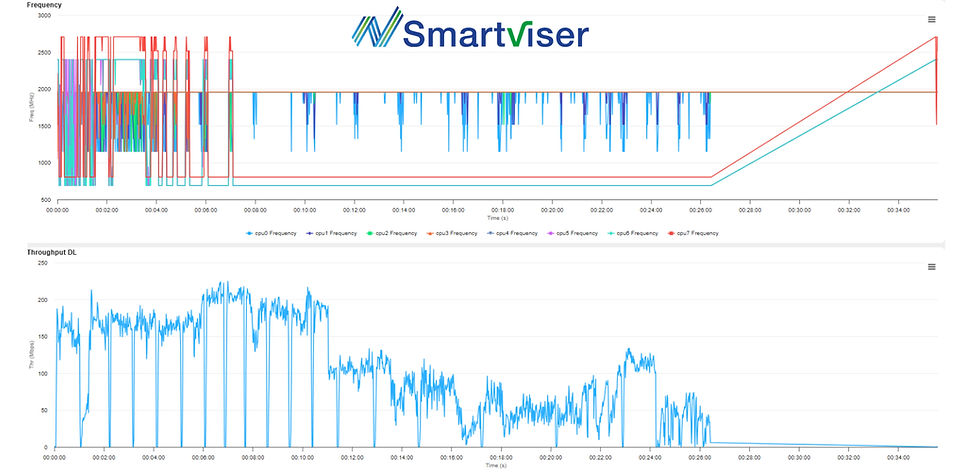
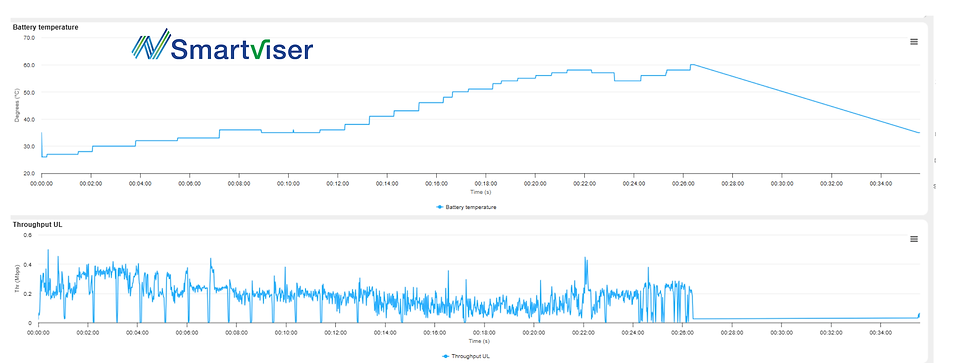
This scenario, while not typical for most users, is a vital edge case for manufacturers to test. It highlights how certain designs may still fail under extreme pressure, risking service disruption and poor user experience if not properly addressed during the development cycle.
Conclusion: 2025 – A Smarter Approach to Heat
Our extensive 2025 testing confirms what the industry has been aiming for: smartphones have come a long way since the early 5G overheating concerns of 2022. While heat management remains a key challenge—especially during extreme use cases—most modern devices now integrate intelligent and layered thermal mitigation strategies.
✅ We observed:
Proactive throttling of frequencies and processing power
Seamless fallback to 4G when thresholds were crossed
Stable user experience during standard and moderately heavy use
Clear thermal control strategies even under intense load like gaming and downloads
However, our extreme stress tests showed that some devices still failed under prolonged heavy load, with shutdowns occurring beyond 50°C. These edge cases highlight that comprehensive thermal testing remains essential, especially early in product development when design and software-level mitigations can still be refined.
Manufacturers must balance performance, battery life, and user safety—and the best-performing devices in our testing did so with minimal compromise to usability. As 5G-Advanced and new use cases (like XR, AI processing, and cloud gaming) push devices even harder, heat will continue to be a defining factor in mobile innovation.
At SmartViser, we remain committed to helping manufacturers and network providers test smarter, earlier, and deeper with our viSer test automation suite—ensuring better performance, improved safety, and superior user experiences.
All test scenarios in this study were executed using viSer Neo, SmartViser’s advanced test automation solution. One of viSer Neo’s key advantages is its ability to run directly on commercial Android devices without requiring any custom firmware or rooting, ensuring that testing conditions reflect real-world user behavior as closely as possible. All tests were conducted in France using local 5G networks, and identical scenarios were applied across multiple Android smartphones to maintain consistency and comparability. viSer Neo captures over 100 KPIs in every session, and when combined with Analytics Studio, results can be visualised through interactive dashboards offering a wide range of charts, graphs, maps, pie charts, and granular drill-down views—enabling detailed and flexible analysis tailored to specific insights.

Susie Siouti is the Chief Commercial Officer for SmartViser helping organisations in the Telecommunications industry offer superior end-user quality of experience and service with the introduction of innovative test automation products. Susie has 20 years of experience in the Telecoms industry and in that time has led teams across the world mainly in Testing and Compliance. Holding an MBA from Henley Business School brings a diverse set of skills and expertise, including business acumen, strategic thinking, financial management, sales and marketing expertise, leadership, and innovation.
Susie joined SmartViser in 2016, is part of the internal steering committee, responsible for developing and implementing the company's commercial strategy and encouraging a customer-centric culture. The main mission is to help organizations to create value by offering better quality products and services by improving operational efficiency and innovation.


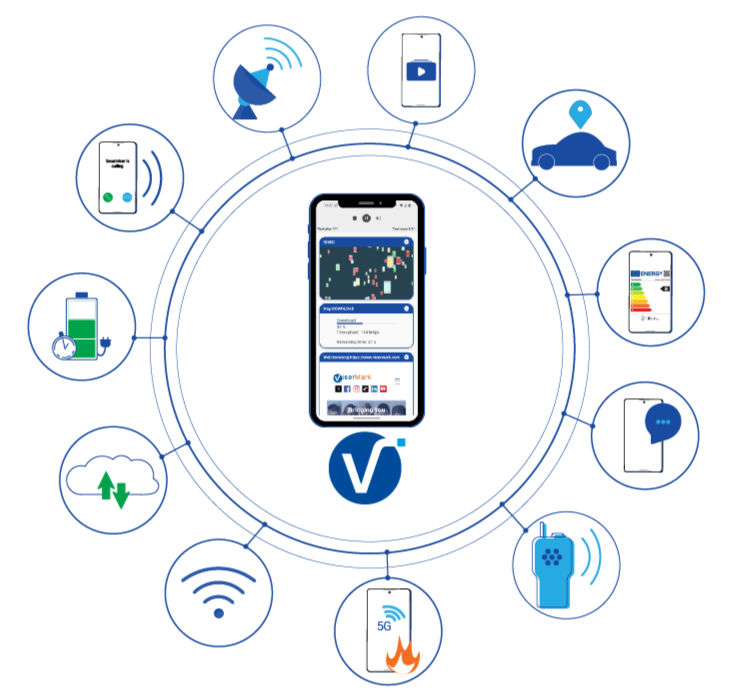




Comments